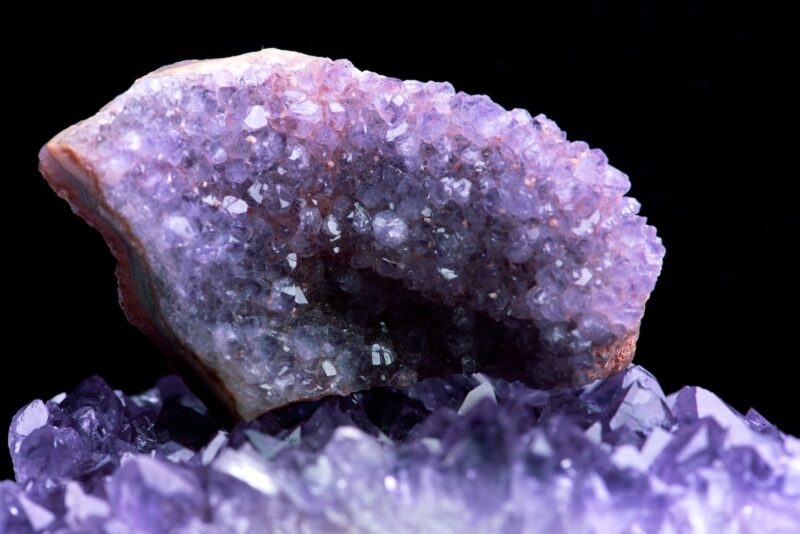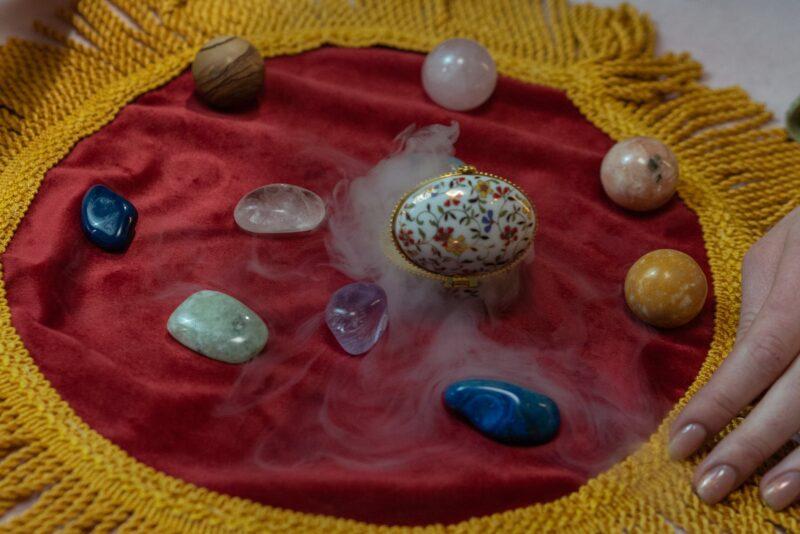Amber is one of the world’s oldest and most valuable gems, a “Gold of the Sea” produced by light and life, maintained by time, and washed up on the shores for humanity, a symbol of beauty, protection, and rebirth. It has been depicted as drops of the sun, tears of the gods, hardened honey, and sunlight solidifying, and it is as sought after today as it was in the most ancient cultures, having been used as far back as the Stone Age for its pleasing warmth of color, value in adornment, and magical and medicinal properties.
Amber is an organic gem, not a crystal or a mineral, but a biological product of nature, a protective resin that seeped from live trees in dense primeval forests and fossilized over millions of years. It is highly valued in the metaphysical realm for its energy and therapeutic powers, as well as the magnificent life force it carries. Amber is deeply connected to the sun and the earth, as well as the once-living insects, critters, and plant matter that are forever suspended within its golden structure. It is attuned to old wisdom and can be a potent instrument for recalling former lives or triggering the recollection of genetic lessons and experiences passed down from one’s forefathers. It is beneficial for dissolving family patterns and establishing one’s prerogative of choice.
Amber is a natural purifier, valued for its capacity to extract pain and illness from the physical body as well as the mind and soul by absorbing bad or sluggish energies and changing them into clear, positive energy. This activates the body’s own healing mechanisms. It boosts energy and promotes tissue repair. Amber is wonderful for purifying and reactivating the chakras, especially the Sacral and Solar Plexus Chakras, and for clearing the atmosphere in which it resides. It produces a bright, relaxing energy that promotes health and well-being, making it ideal for recuperation, depression relief, and working through the grieving process. Amber also acts as a protective shield against negative energies and can be summoned to help remove poison from one’s life or relationships.
Amber was discovered thousands of years ago, washed up on the shores of wild oceans, and was regarded as beautiful and unique, warm to the touch, and light in weight. It carved easily, became electrically charged when rubbed, and ignited quickly. Because of the scarcity of its inclusions and its alleged magical and therapeutic abilities, it was one of the earliest Baltic export items to be traded for spices, salt, and metals. This Amber trade determined prehistoric trade routes, and the inland corridor from the North and Baltic Sea coasts down to the Mediterranean Sea became known as the Amber Road. For millennia, this valuable raw material, known as the “gold of the north,” was transported overland via the Vistula and Dnieper rivers to Italy, Greece, the Black Sea, Syria, Egypt, and beyond.
In many Norse, Greek, and Lithuanian mythologies, amber was associated with the sun, and its droplet shape produced a natural relationship to tears. Because it fully preserved life, it was used to honor the dead in funeral rites and was placed in burial tombs to guard the soul in the afterlife. Amber was originally known as a protection stone for children and was strung as beads and worn around their necks throughout history to protect them from danger and to alleviate teething pain. It was broken into powder and mixed with water, oil, or honey to make an elixir or an ointment to treat deafness and impaired eyesight, fever and stomach trouble, asthma, gout, rheumatism, wounds and infections, epilepsy, and plaque. Amber’s smoke, when lit, was supposed to ward off bad spirits and enchantments, and sailors burned it on ships to ward off sea serpents and perils of the deep. As incense, it relieved stress and was thought to filter germs and clean space, making it popular during birth.
To become amber, the fossil resins had to go through a second hardening period of polymerization in which the molecules joined with each other to form larger molecules, a process that took tens of thousands to millions of years before becoming intractable. The majority of Amber is 30 to 90 million years old, while some are less than a million years old, and the oldest Amber discovered yet is 320 million years old. Copal is a name given to tree resin from the Protium copal tree, which is common in the Mesoamerican region, as well as to young tree resins that are several hundred to several thousand years old and are in an intermediate stage of polymerization and hardening. It has been used for ages in incense, fine varnishes, and ceremonial uses; however, it is sometimes mislabeled as “amber” or “young amber.” Amber resins from Columbia and Madagascar are too young to be regarded as genuine. Copal is easily identified if it becomes sticky when a drop of organic solvents, such as alcohol or acetone, is added to it or if it changes color very little when exposed to a short-wave UV light. Buyers should be wary of imitation Amber housed in well-preserved modern insects. Over 1000 extinct animal species and plant materials have been recognized in Amber, although full specimens are extremely rare, generally found in museums, and are rather expensive.





